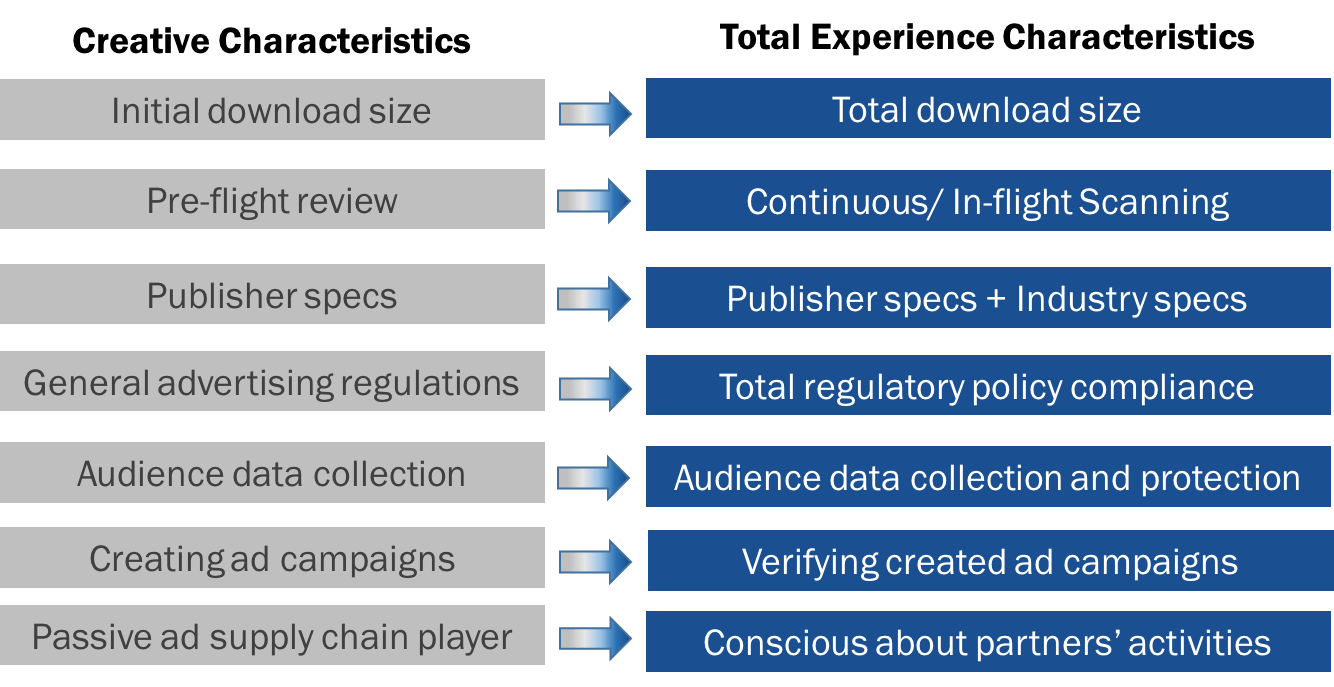Authored by Chris Olson, CEO and Co-Founder, The Media Trust.
Increasing advertiser demands turn the wheels of change for agencies.
There’s no denying that two major phenomena are actively reshaping the existing digital advertising supply chain:
Accountability is being pushed upstream
Not long ago, digital publishers bore the brunt of the blame, shame and liability (financial and legal) for ad-related problems such as performance issues, unauthorized collection of audience data, and security concerns (malvertising). Today, armed with more public awareness (in the form of ad blocking, among others), industry best practices (e.g., TAG, IAB LEAN) and regulations (GDPR anyone?), publishers are finally pushing back on upstream partners when policy-flouting ads are served to their digital environments. And, many partners are listening. Now, several other ad tech players on the buy side of the digital supply chain are joining this publisher revolt and to direct accountability for creative issues to their upstream partners.
Advertisers have spoken
Earlier this month, in an interview with The Wall Street Journal, P&G’s chief brand officer, Marc Pritchard didn’t mince words when it came to expressing his irritation with everyone’s acceptance of serious flaws with the digital advertising supply chain. While he highlighted the complexities of digital advertising and confusing agency contracts, what stood out were his comments on the quality of the digital ad experience for consumers:
“Sometimes we deliver a high-quality media experience, but all too often the experience is, well, crappy. We bombard consumers with thousands of ads a day, subject them to endless ad load times, interrupt them with pop-ups and overpopulate their screens and feeds…”
This comment from the world’s biggest advertiser underscores the importance of digital ad quality in regards to what is being “presented” to audiences today and rightfully so. According to recent research, the consumer packed goods (CPG) industry spends almost 20% of their $225 billion annual marketing budget on digital advertising, yet retailers and shoppers alike gave digital advertising low marks for effectiveness. This provides further impetus for more advertisers to focus on improving the digital ad experience, thus putting the sell-side is under immense pressure to not just launch high-quality ads into the digital supply chain but to prove that those are high-quality ads.
New priorities, New challenges
As the digital ad ecosystem evolves, agencies and media buyers need to re-establish trust with both consumers and advertisers. The first step is adopting industry best practices and standards for ad quality and security. This includes being judicious about audience data collection activity and keeping abreast of the ever-evolving guidelines for a plethora of ad formats.
Agencies have a lot of work to do. As depicted in the image 1, most media buyers today need to take a more farsighted approach to campaign development and scanning. The assumption that an ad, upon entrance into the digital ecosystem, is exactly the same when it renders on a website showcases this ignorance. To meet changing advertiser demands for a better digital ad experience, agencies need to look at:

Image 1
Simply put: agencies need to adopt a more comprehensive view of the entire ad experience – creative + ad (the actual creative with all the corresponding analytics code) + landing page, not just the creative.
A paradigm shift in agency priorities is required. Agencies and media buyers are under unprecedented scrutiny to address ad quality as they are where creatives originate. Their inability to meet the changing demands of both advertisers and publishers directly impact the following areas:
-
Ability to Launch and Serve Ads
As ad formats and standards continue to evolve, meeting these specs across publishers, platforms, and networks impact your ability to serve ads
-
Ad Spend and Campaigns
Delays in launching campaigns jeopardize ad spend and campaign metrics. Also, the inability to verify the campaign and its success – is the ad getting served the way it should be and to the target audience – could damage relationships with advertisers
-
Brand Image
Noncompliance with complex and changing regulations damage brand image and lead to penalties potentially for the advertiser, publisher and the agency itself
Pressure changes the status quo
While the brief to media buyers about what to do and what is expected is clear, it will be interesting to see how agencies actually adapt to the changing digital advertising landscape. Balancing advertiser demands while trying to achieve operational efficiencies and scale and trying to win a turf war against big consulting firms can prove to be a heavy lift for agencies. These bi-directional pressures coming from advertisers on one end and published on the other end of the digital ad supply chain will force revolutionary change. If done right, the end result is a transformed digital advertising ecosystem: positive UX via an optimized and profitably monetized channel.

